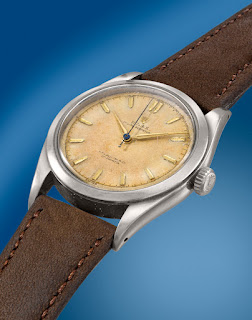Having been founded in 1793, the Fabrique d’Horlogerie de Fontainemelon (FHF) was the world’s oldest raw movement (ébauches) manufacturer. In 1926, it was a founding member of the Ebauches SA holding, along with two companies from Grenchen: AS (A. Schild) and A. Michel. In 1950, no less than 65 manufacturers – among which ETA – had joined the group.
The self-winding Caliber 65 “Fontomatic”, introduced in 1959, was the most distinctive and innovative FHF product of the time, as it used a rotor running on a circular toothed arc at the movement’s edge rather than the usual central rotor mounted on an arbor. A few years later, this design inspired the creation of ultra-thin automatic movements by Jaeger-LeCoultre and Patek Philippe.
Questo espositore di plastica trasparente dei primi Anni 60 era destinato agli agenti di FHF che viaggiavano per incontrare i clienti, in particolare i responsabili acquisti delle Case orologiere, e mostrare loro le ultime novità. Nella gamma presentata qui appaiono quattro movimenti rotondi di misura identica.
Il Calibro 65 automatico “Fontomatic”, creato nel 1959, era il prodotto più inconfondibile e innovativo offerto dalla Casa in quel periodo. Lo caratterizzava l’impiego di un rotore montato su cuscinetti a sfera che oscillava sopra un arco dentato circolare posizionato nel perimetro del movimento, al posto del classico rotore centrale montato su un albero. Alcuni anni più tardi, questa soluzione ispirò la creazione dei movimenti automatici ultrapiatti Jaeger-LeCoultre e Patek Philippe.




























